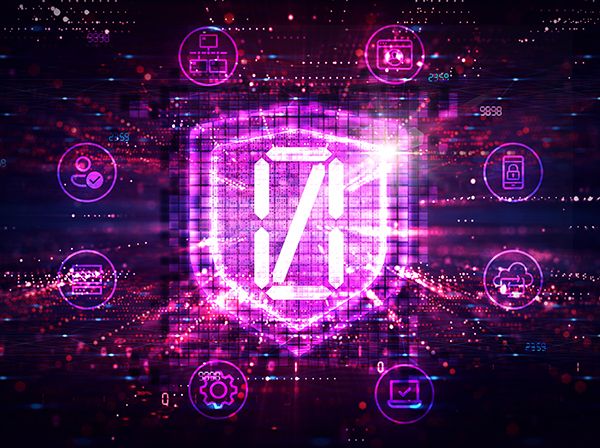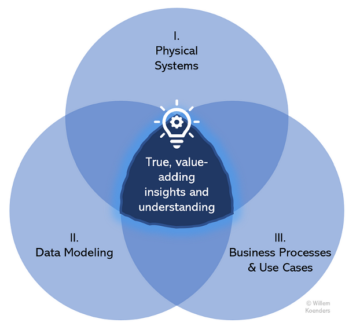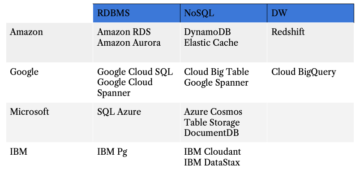

In today’s interconnected digital world, organizations face an ever-increasing threat landscape when it comes to protecting their sensitive data and infrastructure from cyberattacks. With cyber threats becoming more advanced and persistent, relying solely on firewalls and antivirus software is no longer sufficient. Organizations must adopt a proactive approach that continuously verifies user identities, monitors network traffic in real time, and implements strict access controls to minimize potential attack vectors. The need for robust cybersecurity measures has become paramount, as traditional security models have proven inadequate against sophisticated adversaries. As a result, the concept of zero-trust architecture (ZTA) has emerged as a game-changer in shaping the future of Data Science and reinforcing cybersecurity defenses.
The fundamental principle behind zero-trust architecture is simple yet transformative: Trust no one by default. Unlike traditional approaches that rely on perimeter-based security models, ZTA assumes that every user, device, or network component might be compromised or malicious.
By adopting this mindset, organizations can implement a comprehensive set of security controls that scrutinize every interaction and transaction within their systems. The importance of strengthening cybersecurity measures through ZTA cannot be overstated.
Zero-Trust Architecture: A Paradigm Shift in Network Security
The rise of sophisticated cyber threats has necessitated a paradigm shift toward a more robust and proactive security approach. Zero-trust architecture is based on the principle that organizations should never automatically trust any user or device, regardless of their location or network connection.
Instead, ZTA advocates for continuous verification and authentication of every user, device, and application attempting to access resources within the network. By adopting this approach, organizations can significantly enhance their cybersecurity measures by reducing the attack surface and minimizing potential vulnerabilities. ZTA provides granular control over network access privileges, ensuring that only authorized entities are granted access to specific resources based on their identity and context.
This paradigm shift requires organizations to implement robust identity management systems, multifactor authentication mechanisms, encryption protocols, and continuous monitoring tools. Additionally, it necessitates a comprehensive understanding of the organization’s data flows and dependencies to effectively implement micro-segmentation strategies.
Zero-Trust Architecture Is Shaping the Future of Data Science
Zero-trust architecture is playing a critical role in shaping the future of Data Science by revolutionizing cybersecurity measures. By implementing granular access controls and real-time monitoring mechanisms, ZTA reduces the risk of unauthorized data breaches or insider threats. Furthermore, as Data Science becomes increasingly decentralized with cloud computing and edge devices, ZTA provides a scalable solution for securing these distributed environments. It allows organizations to maintain control over their data while enabling collaboration across different platforms securely.
ZTA: Key Strategies for Risk Management and Data Privacy
Implementing a zero-trust approach requires careful planning and consideration of key strategies for effective risk management and data privacy.
- First, organizations must focus on identity verification and authentication. By implementing multifactor authentication protocols, such as biometric verification or token-based access, organizations can ensure that only authorized individuals gain access to sensitive data. This novel approach reduces the risk of unauthorized access or insider threats.
- Second, continuous monitoring of user behavior and network activities in real time through advanced analytics tools is critical for ZTA. Any suspicious activity can be immediately detected and addressed before it escalates into a major security breach.
- Third, network segmentation plays a vital role in reducing the impact of potential breaches. By dividing networks into smaller segments with restricted access controls, organizations can limit lateral movement within their infrastructure, preventing attackers from freely navigating through their systems.
- Fourth, regular security audits and vulnerability assessments are essential for maintaining a strong ZTA.
Leveraging Machine Learning and Identity Verification in ZTA
To further enhance a ZTA environment, organizations are leveraging machine learning (ML) algorithms and identity verification techniques.
ML plays a crucial role in zero-trust architecture by continuously analyzing vast amounts of data to identify patterns and anomalies that might indicate potential security breaches. ML algorithms can detect suspicious activities and notify security teams in real time, enabling them to respond promptly and mitigate risks effectively. By constantly adapting to emerging threats through ML algorithms, ZTA ensures a proactive approach towards cybersecurity.
Identity verification is another vital component of enhancing zero-trust architecture. Organizations employ multifactor authentication methods, including biometrics and behavioral analytics, to validate user identities accurately. These techniques provide an additional layer of security by verifying users’ credentials before granting access to resources or sensitive information.
Fundamentals of Zero-Trust Architecture: A New Approach to Cybersecurity
Under the ZTA framework, trust is never automatically granted based on a user’s location or network credentials. The fundamental principle of ZTA lies in its granular and continuous verification process. By adopting this approach, organizations minimize the risk of unauthorized access or lateral movement within their systems.
Implementing zero-trust architecture involves combining various technologies such as multifactor authentication, micro-segmentation, least privilege access controls, and continuous monitoring. This comprehensive approach ensures that only authorized users gain access to specific resources based on their explicit need.
Understanding the Trust Model: Moving Beyond Perimeter-Based Security
Traditional security models have long relied on perimeter-based defenses, which assume that a strong perimeter will keep threats out. However, with the increasing sophistication of cyberattacks and the rise of remote work, this approach is no longer sufficient.
ZTA assumes that every user and device within or outside the network is untrusted until proven otherwise. This fundamental shift in mindset allows organizations to better protect their critical assets and sensitive data.
Instead of relying solely on firewalls and VPNs at the network perimeter, zero-trust incorporates multiple layers of authentication and authorization throughout an organization’s infrastructure. By moving beyond perimeter-based security, organizations can reduce their reliance on traditional network boundaries as a primary defense mechanism.
Authentication Protocols and Authorization Mechanisms
Implementing secure access controls is a critical aspect of ZTA, as it helps to ensure that only authorized users and devices can access resources within a network.
Authentication protocols play a vital role in verifying the identity of users or devices attempting to gain access. Common authentication methods include username-password combinations, biometric data, two-factor authentication, and digital certificates. These protocols help prevent unauthorized individuals from posing as legitimate users.
Once a user’s identity has been verified, authorization mechanisms (role-based or attribute-based access controls) come into play. These mechanisms determine what actions or resources an authenticated user or device is allowed to access within the network.
Implementing secure access controls requires careful consideration of both authentication and authorization components.
Trusted Devices and Data Encryption
Endpoint security plays a pivotal role in implementing a robust ZTA. To ensure the integrity of the network, organizations must focus on two fundamental aspects: trusted devices and data encryption. Trusted devices act as the gatekeepers to access sensitive resources within a zero-trust environment. These devices are pre-validated and meet predefined security standards before being granted access.
Additionally, data encryption is paramount in safeguarding sensitive information. Encryption algorithms convert data into unreadable formats that can only be deciphered with the appropriate decryption keys. Whether it’s encrypting files stored on endpoints or securing data transmitted across networks, employing robust encryption protocols ensures that even if intercepted by malicious actors, the information remains incomprehensible.
By combining trusted devices with data encryption techniques, organizations can establish a fortified endpoint security infrastructure within their ZTA. This multilayered approach significantly reduces the attack surface for potential threats while maintaining a higher level of control over network access permissions.
Network Traffic Analysis and Security Monitoring
One crucial aspect of ZTA is enhancing threat detection through network traffic analysis and security monitoring. Network traffic analysis involves the examination of data packets flowing across an organization’s network.
By leveraging advanced analytics and ML algorithms, security teams can gain valuable insights into patterns and anomalies within the network traffic. This enables them to identify potential threats or malicious activities in real time.
By continuously monitoring network traffic, organizations can proactively detect and respond to security incidents before they escalate into major breaches. Additionally, comprehensive security monitoring plays a vital role in threat detection within a ZTA.
It involves continuous monitoring of an organization’s systems, applications, and endpoints for any signs of unauthorized access or suspicious behavior. Advanced monitoring tools enable the collection and analysis of vast amounts of data from various sources, including logs, event records, and user behavior analytics. This allows security teams to detect indicators of compromise promptly.
By combining network traffic analysis with robust security monitoring practices, organizations can significantly enhance their ability to detect potential threats within their environment.
Privileged Access Management and Data Loss Prevention
One of the key components of a robust ZTA is the implementation of effective measures to mitigate both external and insider threats. Two critical strategies for achieving this are privileged access management (PAM) and data loss prevention (DLP).
Privileged access management focuses on securing privileged accounts, which have elevated permissions within an organization’s network. These accounts are often targeted by malicious actors seeking unauthorized access to sensitive information or systems.
By implementing PAM solutions, organizations can enforce strict controls over who has access to these accounts, ensuring that only authorized individuals can use their privileges. This reduces the risk of insider threats and prevents external attackers from exploiting compromised credentials.
On the other hand, data loss prevention (DLP) aims to safeguard sensitive data from being leaked or stolen either intentionally or unintentionally. DLP solutions employ various techniques such as content analysis, encryption, and user behavior monitoring to detect and prevent unauthorized data transfers or leaks.
By identifying potential risks in real time and taking proactive measures to block them, organizations can significantly minimize the impact of both insider threats and external attacks.
Image used under license from Shutterstock.com
- SEO Powered Content & PR Distribution. Get Amplified Today.
- PlatoData.Network Vertical Generative Ai. Empower Yourself. Access Here.
- PlatoAiStream. Web3 Intelligence. Knowledge Amplified. Access Here.
- PlatoESG. Carbon, CleanTech, Energy, Environment, Solar, Waste Management. Access Here.
- PlatoHealth. Biotech and Clinical Trials Intelligence. Access Here.
- Source: https://www.dataversity.net/zero-trust-architecture-explained/
- :has
- :is
- 224
- 300
- a
- ability
- access
- access management
- Accounts
- accurately
- achieving
- across
- Act
- actions
- activities
- activity
- actors
- adapting
- Additional
- Additionally
- addressed
- adopt
- Adopting
- advanced
- advocates
- against
- aims
- algorithms
- allowed
- allows
- amounts
- an
- analysis
- analytics
- analyzing
- and
- and infrastructure
- Another
- antivirus
- Antivirus Software
- any
- Application
- applications
- approach
- approaches
- appropriate
- architecture
- ARE
- AS
- aspect
- aspects
- assessments
- Assets
- assume
- assumes
- At
- attack
- Attacks
- attempting
- audits
- authenticated
- Authentication
- authorization
- authorized
- automatically
- based
- BE
- become
- becomes
- becoming
- been
- before
- behavior
- behavioral
- behind
- being
- Better
- Beyond
- biometric
- biometrics
- Block
- both
- boundaries
- breach
- breaches
- by
- CAN
- cannot
- careful
- certificates
- Cloud
- cloud computing
- collaboration
- collection
- combinations
- combining
- come
- comes
- Common
- component
- components
- comprehensive
- compromise
- Compromised
- computing
- concept
- connection
- consideration
- constantly
- content
- context
- continuous
- continuously
- control
- controls
- convert
- Credentials
- critical
- critical aspect
- crucial
- cyber
- cyberattacks
- Cybersecurity
- data
- Data Breaches
- data loss
- data loss prevention
- data science
- DATAVERSITY
- decentralized
- Default
- Defense
- dependencies
- detect
- detected
- Detection
- Determine
- device
- Devices
- different
- digital
- digital world
- dlp
- Edge
- Effective
- effectively
- either
- elevated
- emerged
- emerging
- employing
- enable
- enables
- enabling
- encryption
- Endpoint
- Endpoint security
- endpoints
- enforce
- enhance
- enhancing
- ensure
- ensures
- ensuring
- Environment
- escalate
- essential
- establish
- Even
- Event
- ever-increasing
- Every
- examination
- explained
- exploiting
- external
- Face
- Files
- firewalls
- Flowing
- Flows
- Focus
- focuses
- For
- formats
- Framework
- from
- fundamental
- further
- Furthermore
- future
- Gain
- game-changer
- granted
- granting
- hand
- Have
- help
- helps
- higher
- However
- HTML
- HTTPS
- identify
- identifying
- identities
- Identity
- identity management
- Identity Verification
- if
- immediately
- Impact
- implement
- implementation
- implementing
- implements
- importance
- in
- include
- Including
- incomprehensible
- increasing
- increasingly
- indicate
- Indicators
- individuals
- information
- Infrastructure
- Insider
- insights
- integrity
- intentionally
- interaction
- interconnected
- into
- involves
- IT
- ITS
- jpg
- Keep
- Key
- keys
- landscape
- layer
- layers
- Leaks
- learning
- least
- legitimate
- Level
- leveraging
- License
- lies
- LIMIT
- location
- Long
- longer
- loss
- machine
- machine learning
- maintain
- maintaining
- major
- management
- max-width
- measures
- mechanism
- mechanisms
- Meet
- methods
- might
- Mindset
- minimize
- minimizing
- Mitigate
- ML
- ML algorithms
- model
- models
- monitoring
- monitors
- more
- movement
- moving
- multifactor authentication
- MultiLayered
- must
- navigating
- necessitates
- Need
- network
- Network Access
- network traffic
- networks
- never
- New
- no
- novel
- of
- often
- on
- ONE
- only
- or
- organizations
- Other
- otherwise
- out
- outside
- over
- packets
- paradigm
- Paramount
- patterns
- permissions
- pivotal
- planning
- Platforms
- plato
- Plato Data Intelligence
- PlatoData
- Play
- playing
- plays
- potential
- practices
- prevent
- preventing
- Prevention
- prevents
- primary
- principle
- privilege
- privileged
- privileges
- Proactive
- process
- protect
- protecting
- protocols
- proven
- provide
- provides
- real
- real-time
- records
- reduce
- reduces
- reducing
- Regardless
- regular
- reliance
- rely
- relying
- remains
- remote
- remote work
- requires
- Resources
- Respond
- restricted
- result
- Revolutionizing
- Rise
- Risk
- risk management
- risks
- robust
- Role
- safeguarding
- scalable
- Science
- secure
- securely
- securing
- security
- Security audits
- security breaches
- seeking
- segments
- sensitive
- set
- shaping
- shift
- should
- shutterstock
- significantly
- Signs
- Simple
- smaller
- Software
- solely
- solution
- Solutions
- sophisticated
- sophistication
- Sources
- specific
- standards
- stolen
- stored
- strategies
- strengthening
- strict
- strong
- such
- sufficient
- Surface
- suspicious
- Systems
- taking
- targeted
- teams
- techniques
- Technologies
- that
- The
- The Future
- the information
- their
- Them
- These
- they
- this
- threat
- threat detection
- threats
- Through
- throughout
- time
- to
- today’s
- tools
- toward
- towards
- traditional
- traffic
- transaction
- transfers
- transformative
- Trust
- trusted
- two
- two-factor authentication
- unauthorized
- under
- understanding
- unlike
- until
- use
- used
- User
- users
- VALIDATE
- Valuable
- various
- Vast
- Verification
- verified
- verifying
- vital
- VPNs
- Vulnerabilities
- vulnerability
- What
- when
- whether
- which
- while
- WHO
- will
- with
- within
- Work
- world
- yet
- zephyrnet












